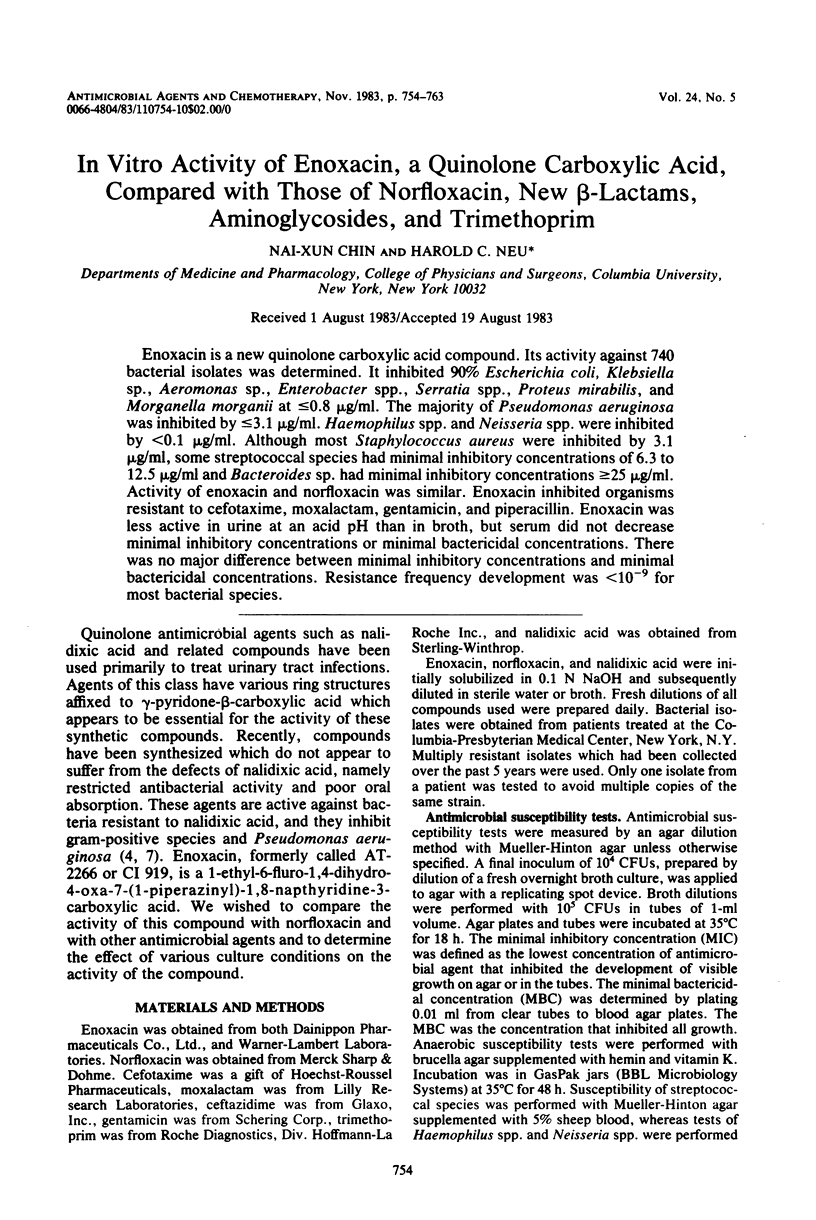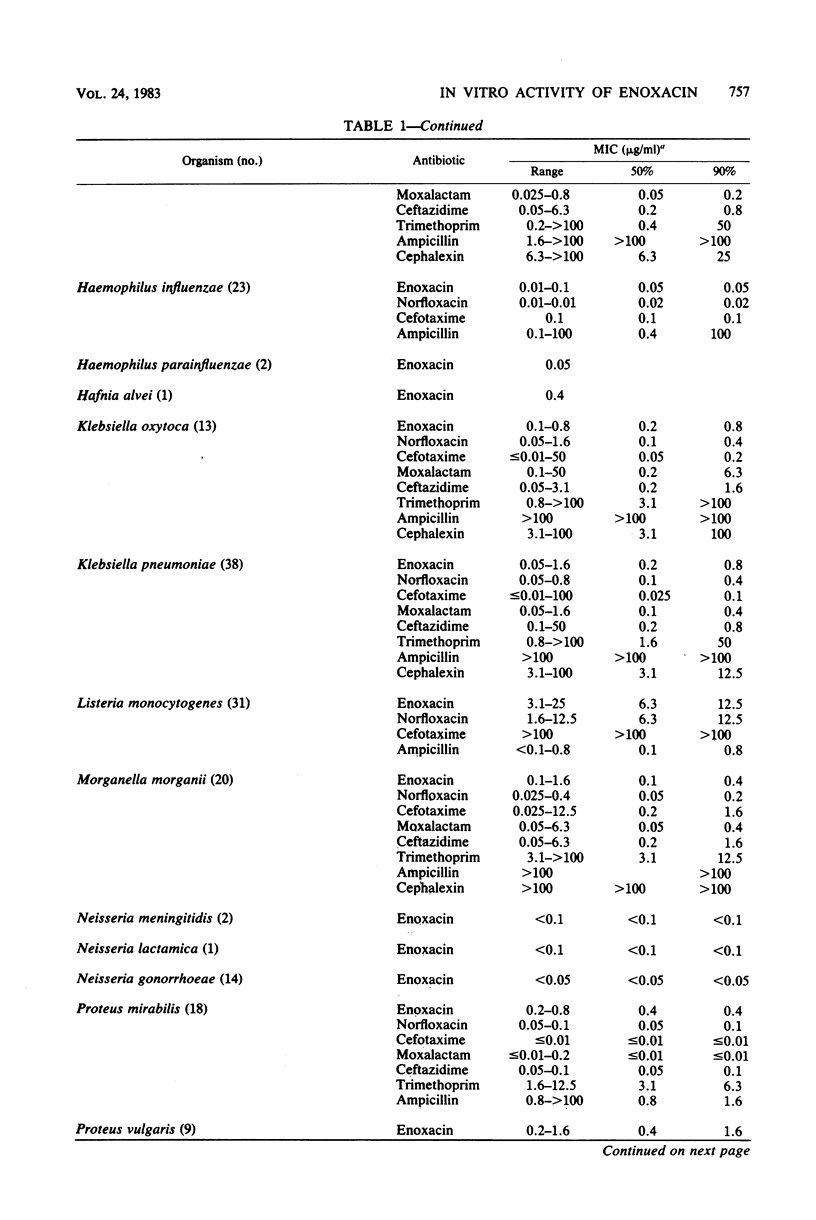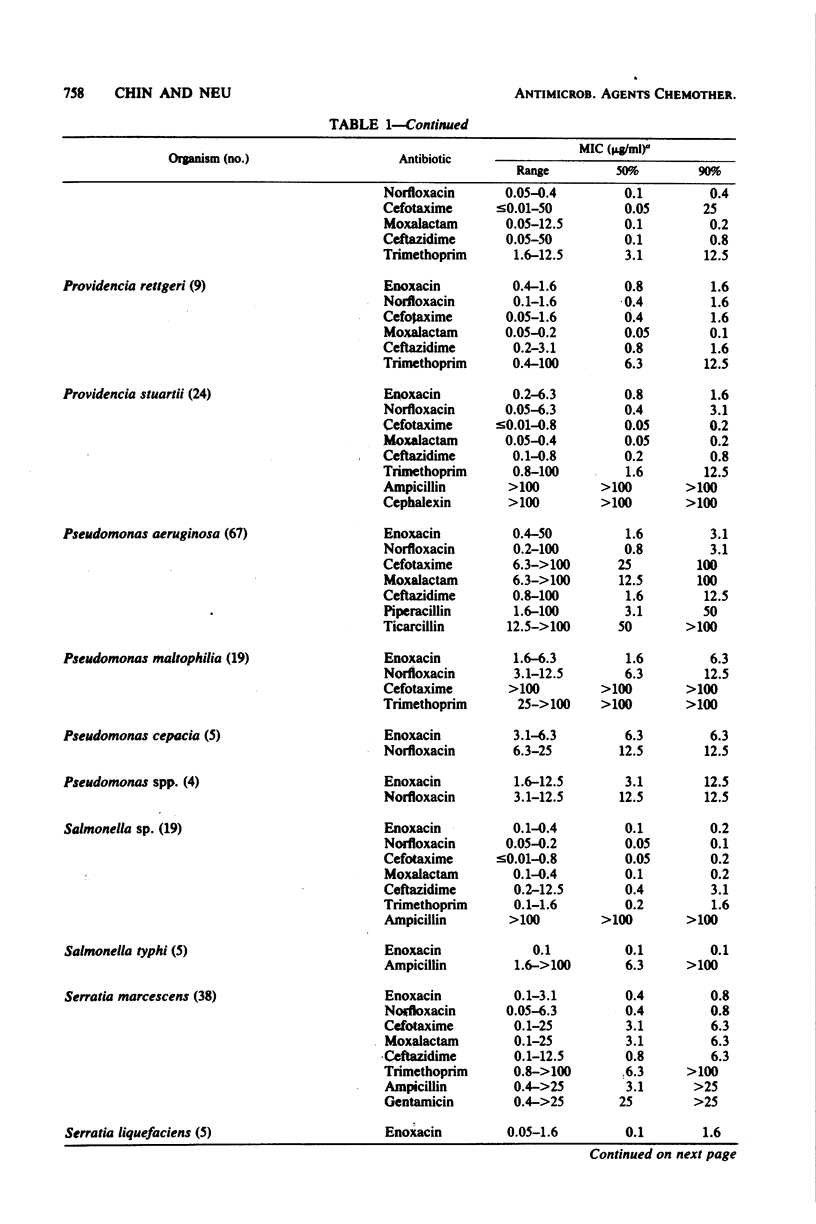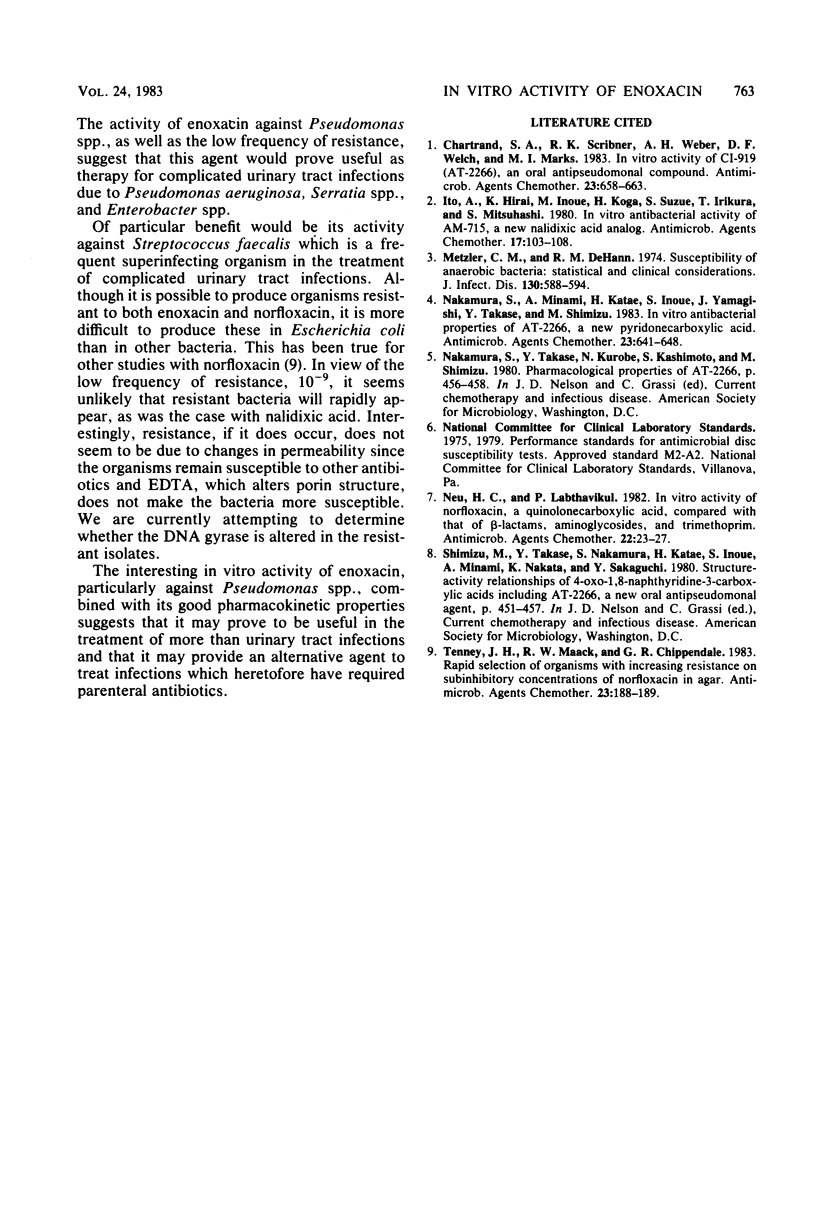Abstract
Enoxacin is a new quinolone carboxylic acid compound. Its activity against 740 bacterial isolates was determined. It inhibited 90% Escherichia coli, Klebsiella sp., Aeromonas sp., Enterobacter spp., Serratia spp., Proteus mirabilis, and Morganella morganii at less than or equal to 0.8 micrograms/ml. The majority of Pseudomonas aeruginosa was inhibited by less than or equal to 3.1 micrograms/ml. Haemophilus spp. and Neisseria spp. were inhibited by less than 0.1 micrograms/ml. Although most Staphylococcus aureus were inhibited by 3.1 micrograms/ml, some streptococcal species had minimal inhibitory concentrations of 6.3 to 12.5 micrograms/ml and Bacteroides sp. had minimal inhibitory concentrations greater than or equal to 25 micrograms/ml. Activity of enoxacin and norfloxacin was similar. Enoxacin inhibited organisms resistant to cefotaxime, moxalactam, gentamicin, and piperacillin. Enoxacin was less active in urine at an acid pH than in broth, but serum did not decrease minimal inhibitory concentrations or minimal bactericidal concentrations. There was no major difference between minimal inhibitory concentrations and minimal bactericidal concentrations. Resistance frequency development was less than 10(-9) for most bacterial species.
Full text
PDF









Selected References
These references are in PubMed. This may not be the complete list of references from this article.
- Chartrand S. A., Scribner R. K., Weber A. H., Welch D. F., Marks M. I. In vitro activity of CI-919 (AT-2266), an oral antipseudomonal compound. Antimicrob Agents Chemother. 1983 May;23(5):658–663. doi: 10.1128/aac.23.5.658. [DOI] [PMC free article] [PubMed] [Google Scholar]
- Ito A., Hirai K., Inoue M., Koga H., Suzue S., Irikura T., Mitsuhashi S. In vitro antibacterial activity of AM-715, a new nalidixic acid analog. Antimicrob Agents Chemother. 1980 Feb;17(2):103–108. doi: 10.1128/aac.17.2.103. [DOI] [PMC free article] [PubMed] [Google Scholar]
- Metzler C. M., DeHaan R. M. Susceptibility tests of anaerobic bacteria: statistical and clinical considerations. J Infect Dis. 1974 Dec;130(6):588–594. doi: 10.1093/infdis/130.6.588. [DOI] [PubMed] [Google Scholar]
- Nakamura S., Minami A., Katae H., Inoue S., Yamagishi J., Takase Y., Shimizu M. In vitro antibacterial properties of AT-2266, a new pyridonecarboxylic acid. Antimicrob Agents Chemother. 1983 May;23(5):641–648. doi: 10.1128/aac.23.5.641. [DOI] [PMC free article] [PubMed] [Google Scholar]
- Neu H. C., Labthavikul P. In vitro activity of norfloxacin, a quinolinecarboxylic acid, compared with that of beta-lactams, aminoglycosides, and trimethoprim. Antimicrob Agents Chemother. 1982 Jul;22(1):23–27. doi: 10.1128/aac.22.1.23. [DOI] [PMC free article] [PubMed] [Google Scholar]
- Tenney J. H., Maack R. W., Chippendale G. R. Rapid selection of organisms with increasing resistance on subinhibitory concentrations of norfloxacin in agar. Antimicrob Agents Chemother. 1983 Jan;23(1):188–189. doi: 10.1128/aac.23.1.188. [DOI] [PMC free article] [PubMed] [Google Scholar]


